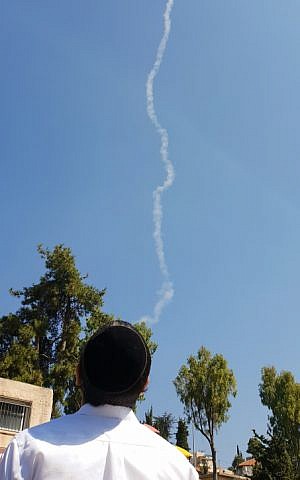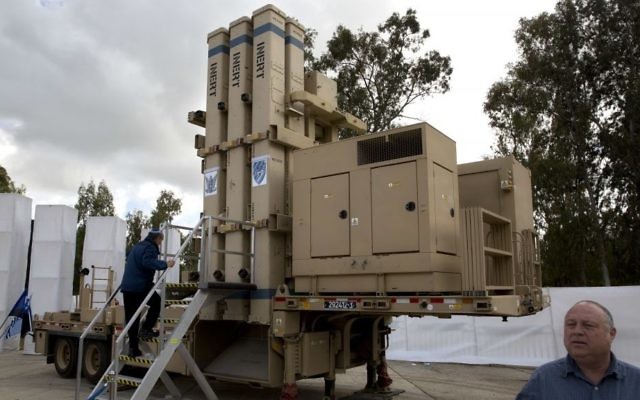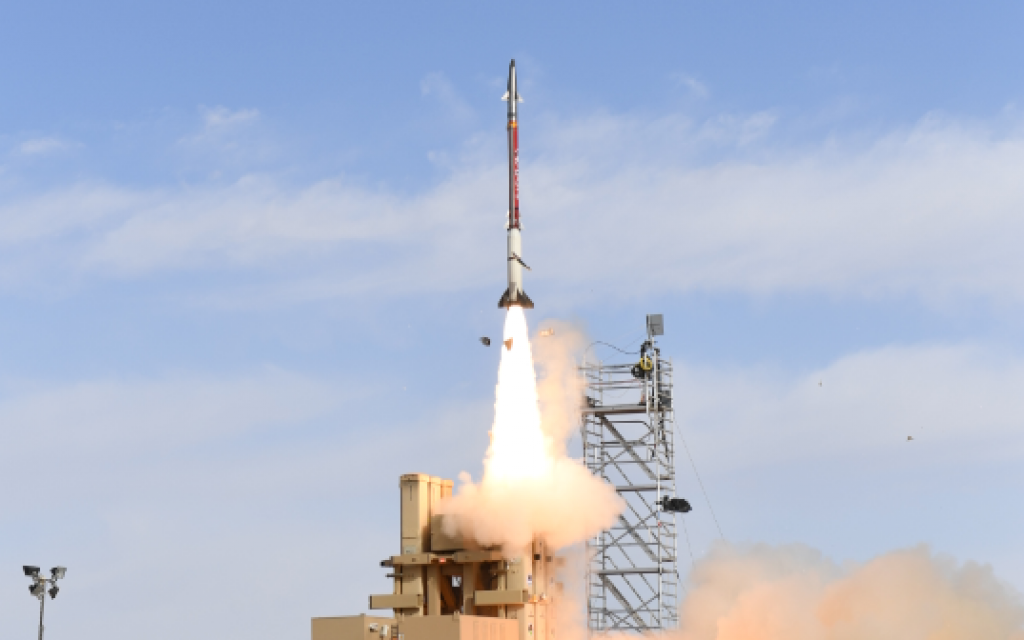Russia reportedly in possession of advanced Israeli interceptor missile
Chinese news site reports David’s Sling missile landed intact in Syria after failing to hit Syrian rocket in July 2018, taken to Moscow for examination
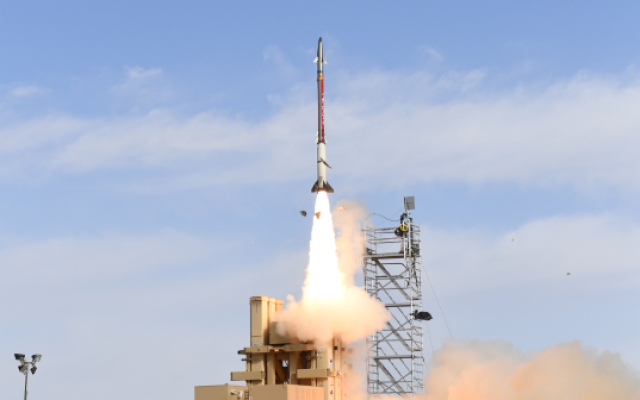
Interception tests of the David's Sling Aerial Defense System on March 19, 2019. (Defense Ministry)
Russia is in possession of an advanced Israeli interceptor missile that was launched last year in response to Syrian rocket fire, according to a Chinese news site.
In its first known operational use, two interceptors from the David Sling’s anti-missile system were fired in July 2018 at rockets launched from Syria that appeared to be heading toward Israel but ultimately landed inside Syrian territory.
The Israeli interceptors did not strike the Syrian missiles: one was self-detonated by the Israeli Air Force; the second reportedly fell inside Syria.
According to a report by the Chinese news site SINA Saturday, the interceptor landed intact in Syria and was swiftly recovered by Syrian military forces.
The news site said the David’s Sling missile was handed over to Russia, which is fighting on behalf of President Bashar Assad’s regime in the Syrian civil war, and brought to Moscow for examination.
An Israeli man watches the smoke trail of a David’s Sling interceptor missile in the northern Israeli city of Safed after the interceptor was fired toward a Syrian SS-21 missile, on July 23, 2018. (David Cohen/Flash90)
According to SINA, Israel and the United States asked Russia to return the missile.
Details of the report were not confirmed by Russia. The Israel Defense Forces said it does not comment on foreign reports.
The IDF defended the deployment of the interceptor missiles at the time, saying its forces had acted correctly given the short amount of time there was to act.
However, the army said that the technical reasons for why the missiles failed to hit their targets could not be published due to security concerns.
The projectiles fired from Syria were identified as Russian-made OTR-21 Tochka missiles (also known as SS-21 Scarab missiles) and were in the air for a minute and a half. The missiles can carry a 500 kilogram (half ton) warhead and have a range of 100 kilometers (60 miles).
The army calculated that the missiles were heading for Israeli territory and waited until the last moment to fire the anti-missile interceptors.
After David’s Sling was launched, the air defense battery’s computers determined that the Syrian missiles were going to fall short and did not pose a danger to Israel. At that point, one of the interceptor missiles was ordered to self-destruct, doing so over northern Israel, in the southern Golan Heights. The army did not say what happened to the second interceptor missile and at the time it was seen as unlikely to have been recovered intact by Syria and used to gather intelligence about the air defense system’s capabilities.
The David’s Sling missile defense-system seen at the Hatzor Air Base, Israel. Sunday, April 2, 2017. (AP Photo/Sebastian Scheiner)
The David’s Sling interceptor is designed to deal with missiles coming from between 40 kilometers (24.85 miles) and 300 kilometers (186.41 miles) away, making up the middle tier of Israel’s advanced air defense array.
Israel also has the Iron Dome system for short range projectiles, and the Arrow 3, which is designed to intercept long-range ballistic missiles.
David’s Sling, which was declared operational in April 2017, was developed in a joint project by the Israel Missile Defense Organization and the US Defense Department’s Missile Defense Agency. It is meant to replace the Patriot missiles in Israel’s arsenal. The system, which can shoot down medium-range missiles, can also be deployed against aircraft.


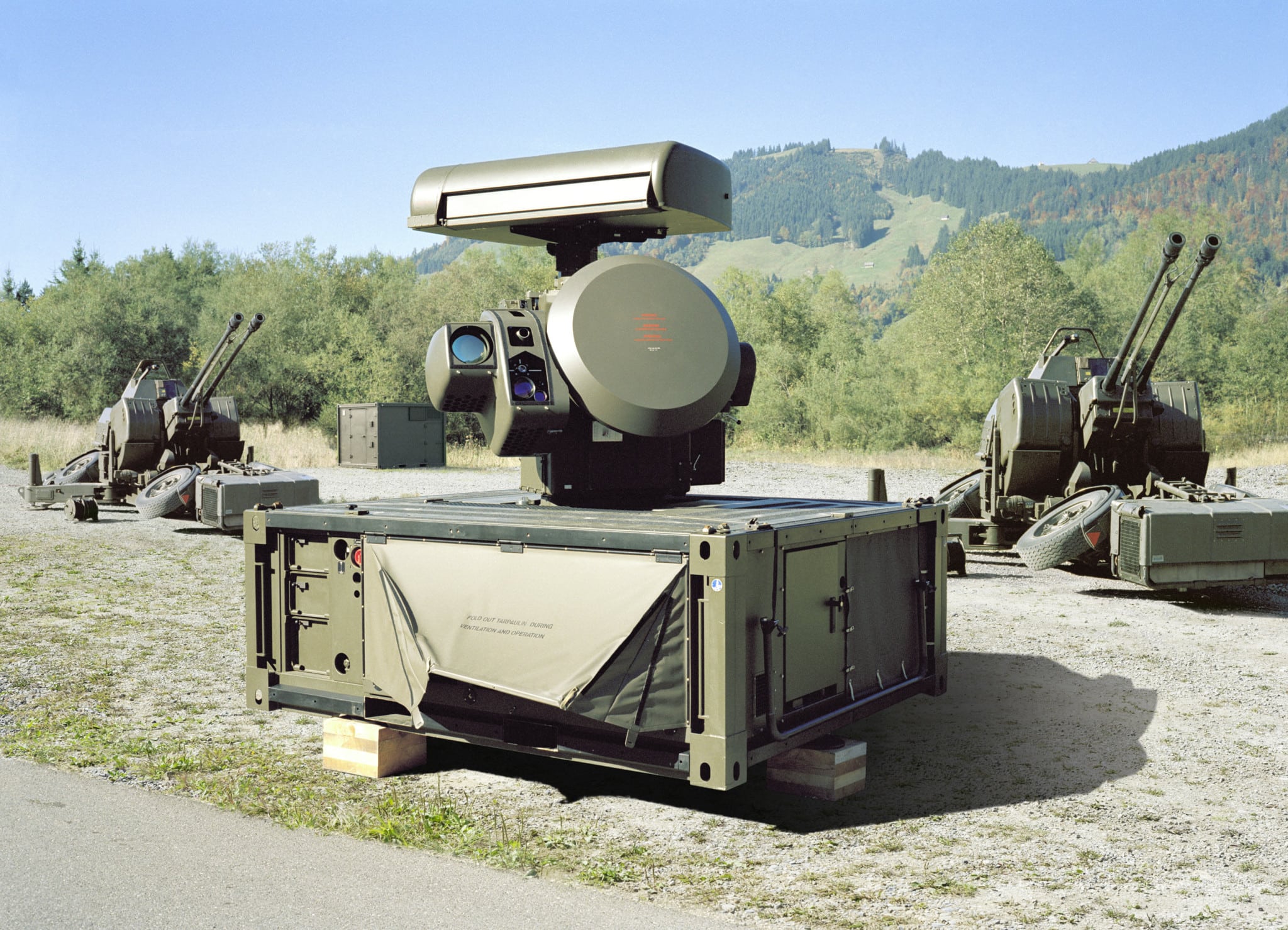
 Oerlikonilla tosin vain pariin kertaan.
Oerlikonilla tosin vain pariin kertaan.

